I’ve installed a 1 3/4″ solid core, birch veneer door in an entrance that is about 20″ below the level of street grade in a courtyard. Three times ! This latest door has 5 coats of quality paint on it ( all 6 sides ) yet after about 2-3 months each door has become incredibly bowed. Would it be worthwhile to invest in a moisture meter to assess this problem? I am very interested in my customer’s satisfaction, but also tired of spending my time and money continually dealing with this door. Any insights with similar problems would be much appreciated.
Discussion Forum
Discussion Forum
Up Next
Video Shorts
Featured Story
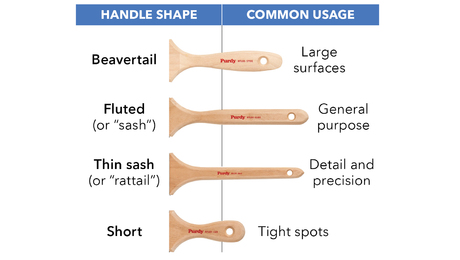
Tips for picking the right paintbrush based on paint type, surface, and personal comfort.
Featured Video
How to Install Cable Rail Around Wood-Post CornersHighlights
"I have learned so much thanks to the searchable articles on the FHB website. I can confidently say that I expect to be a life-long subscriber." - M.K.
Fine Homebuilding Magazine
- Home Group
- Antique Trader
- Arts & Crafts Homes
- Bank Note Reporter
- Cabin Life
- Cuisine at Home
- Fine Gardening
- Fine Woodworking
- Green Building Advisor
- Garden Gate
- Horticulture
- Keep Craft Alive
- Log Home Living
- Military Trader/Vehicles
- Numismatic News
- Numismaster
- Old Cars Weekly
- Old House Journal
- Period Homes
- Popular Woodworking
- Script
- ShopNotes
- Sports Collectors Digest
- Threads
- Timber Home Living
- Traditional Building
- Woodsmith
- World Coin News
- Writer's Digest

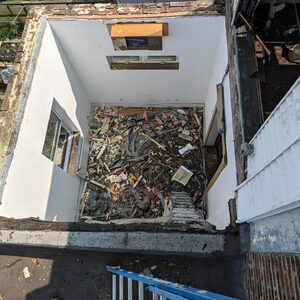
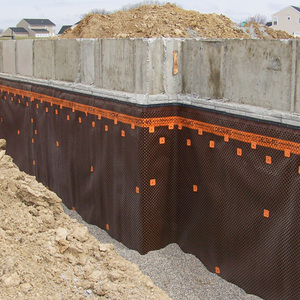
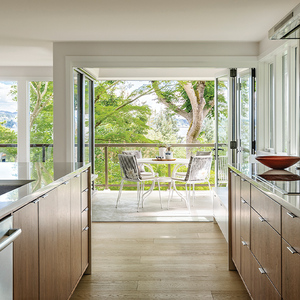
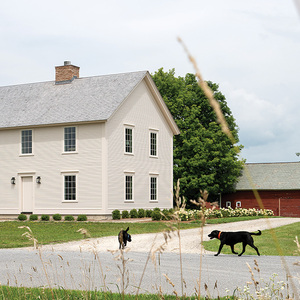













Replies
z-man,
"You don't need a weatherman to know which way the wind blows". - Bob Dylan
Likewise, I wouldn't invest in moisture meter for this door.
You don't give us a geographical location, but it's pretty easy to conclude that the climate is substantially different on the outside of the door than on the inside.
Is there a storm door protecting this door? Does this door face an unobstructed sun on the south or west side of the home? Is there a roof that protects the door from direct contact from rain? Is the home ACed? Is the home heated, but not humidified? What color is the door painted? Latex paint?
We'll wait for more info before making suggestions.
Howdy, location of the bowed door is Chicago, there is no storm door ( an issue of looks ) , door doesn't recieve much sun ( north facing location ), no roof but it is quite sheltered in its location, home is AC'd and humidified, the door is painted dark green with latex paint. Thanks again.
Well, I'm certainly familiar with the climate in general as I'm something like 100 miles from you …….as the crow flies.
I should've asked, but didn't…………..is this door……. frame and panel or slab construction? I probably don't need to point out that the F&P would generally be a more stable door as far as bow and warp are concerned.
You probably also know that it's the differential between the interior world and the exterior world that's doing the number on the door. Each side of the door is attempting to reach EMC (equilibrium moisture content) with its own world. When those two worlds are different (particularly in terms of atmospheric borne humidity/moisture), conflict arises as evidenced by the bowing. The greater the conflict……the greater the bowing/warping. To make matters worse, both worlds are in a state of flux although the exterior side is subjected to much greater changes throughout the year than the interior side is and……….you have hung a solid core door. You can expect to see variances throughout the year concerning how badly the door is bowing as bowing is a barometer of the degree of conflict.
Although a F&G door is by far the better choice any door you hang there is going to face the same conflicts. A slab style door is going to be multiple times the problem though that a F&P door will be. There's no need to return the door you have now if you want a straight one to hang. Simply remove the door, take it to a location where the exposure is identical on both sides and wait. Eventually, it will return to flat, but this could take months. Unfortunately, this doesn't resolve the situation for you with the client.
About the best one can do if hanging a wood door on the exterior is to minimize the conflict and/or buffer the situation/exchange rate. The initial criteria is to minimizing the conflict would be to prevent exposure to direct sunlight and prevent rain from striking the exterior of the door. One of these seems to be satisfied. If the door was exposed to direct sunlight, I'd suggest getting rid of that dark solar-sink of a color. There isn't much you're going to do about evening out the differing ambient humidity levels and so it's on to buffering the conflict.
. Latex paint offers little barrier to moisture vapor exchange and this has made matters much worse for you. You need a coating on both sides that offers greater resistance to exchange. An really excellent choice would be a 1/4" thick coating of paraffin. Not practical. Shellac is a great vapor barrier, but is not suitable for exposure to water droplets. Oil-based coatings are pretty good as barriers go. Therefore, I might suggest that you (ugh) strip the latex, apply two or three coats of dewaxed shellac (Zinnser Seal Kote) and then top coat with at least two coats of high quality oil-based paint. (Sikken's yacht paints?) You need to start with a door that is flat however. Another ugh for you I'm sure. (There is a reason that many exterior doors these days are metal clad. Metal makes a good vapor barrier, too.)
Something to bear in mind about vapor barriers is the increase in resistance per additional coat. A second coat offers a 100% increase over just one coat, but the third coat is only a 33% increase over having two coats. That's still a substantial difference. The fourth coat offers a 25% increase over what resistance you already had with three coats. You get the picture, I'm sure.
Much as I hate to admit/say it, this might be a place for a composition door (mdf) IF you can protect it from the elements with a storm door and/or make certain you have applied several coats of oil-based paint. Get help if you go to hang one of these monsters and make sure you have long hinge screws thru to the studs behind.
It seems that at this point, it might be wise to realize and remind the client that wood physics doesn't change because we don't understand it. Never has for me anyway. :-)
Knowledge is power, but only if applied in a timely fashion.
z-man,
I suspect the reason that you've continued to hang the same door over and over was because of the client's insistance of a wood door. This can be made to work, but I certainly wouldn't try it with a slab door. The double front doors on this Vic are painted solid wood F&P and never give us a lick of problems. Nor have any of the other many solid wood doors we've hung for others, so long as the client agreed to comply with our stipulations concerning type and color of coatings. If they don't, we won't warranty the job.
Yes, the most reliable way to a reliable result for you would likely be a metal clad door....and it'll be the most economic.
If your client insists on wood for the interior of the door....I think both Andersen and Marvin offer doors that have a metal clad exterior and wood veneer interior. Have a few stiff drinks or place a nitro tab under your tongue prior to getting the price quote.
Knowledge is power, but only if applied in a timely fashion.
Edited 4/11/2003 12:07:00 PM ET by GOLDHILLER
Edited 4/11/2003 12:16:53 PM ET by GOLDHILLER
Replaced several solid core doors that looked like banana's when viewed on edge. Solved the problem in all cases with steel insulated prehung units. Since you're painting the door anyway, seems like the way to go. Just becareful, they dent. Get the thicker gage door.
Good Luck.
z-man...................less than 9 months.................3 doors...................think about it....................... Get off the merry-go-round and put a steel or fiberlass door in.
You don't need moisture meters, you don't need science, you don't need dissertations, you've run plenty of experiments-trust your results. A 1 3/4 solid core birch veneer door won't work in your situation!
Just do it.
Edited 4/11/2003 11:25:20 AM ET by Svenny
Question to all people in putting. I have used wood veneers that are backed on laminate. Do you think that this would improve the moisture/movement problem?
I have used this product for B.E.Maple before on interior projects and have had no problem. What do you think?
Most definitely, I'd say.
Now if you're referring to using this on an exterior project, I wouldn't venture a guess as to how well it will hold up though. Never used it for exterior stuff. Can't say I've heard of it being used for exterior stuff either.
If you can keep it out of the sun and prevent rain from penetrating the veneer causing it to come unglued, or the melamine from its substrate........ it just might work dandy.
Knowledge is power, but only if applied in a timely fashion.